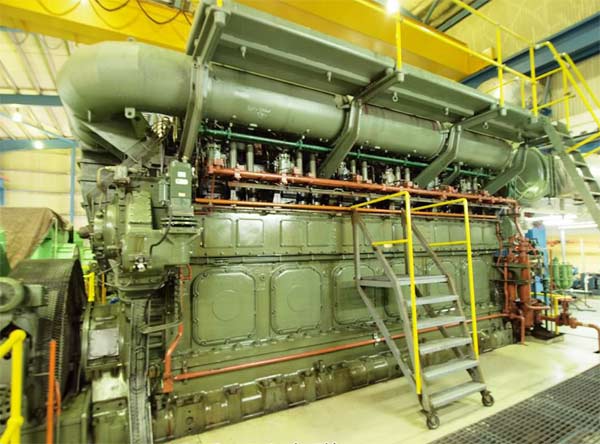NCPC Perspective

ON Sunday April 17, 2016 a meeting of OPEC (Organisation of the Petroleum Exporting Countries) and non-OPEC countries failed to reach an agreement which would see oil production frozen at the January 2016 levels, in an effort to cease the global surplus of oil, thereby stimulating some increases in the price of the precious commodity.
For the past 15 to 18 months prices of ‘Brent oil’ have been uncharacteristically low, bottoming out at US$29 per barrel, which is almost unheard of in the present day oil markets. The oil industry has been historically characterized with seasons of price booms and busts, but the recent downturn in prices has been the most severe since the mid to late 1980. The main causes of the severe dip in oil prices are: the slowed economic activity globally, particularly in China, which has stifled global demand for the commodity; the significant increase in oil production by the United States of America as a result of the production of shale oil; and the persistence of the Saudi Arabians, who will not sacrifice market share to curb the falling prices of oil. The lifting of trade restrictions on Iran, and the general return of the trading of Iran’s oil in the global market, certainly has not helped the cause either.
In fact, the role of Iran on the global market was perhaps one of the main reasons an agreement was not reached on the freezing of production. Saudi Arabia, the world’s largest exporter of oil, was adamant that Iran should agree to freeze, if they (Saudi Arabia) were being asked to do the same. However, Iran which recently returned to the global oil trade was reluctant to hold back on its production levels, as it is attempting to carve out its own share of the market. With that being said it is very likely, that prices will remain somewhat subdued for the foreseeable future, and barring any global calamity oil prices should not be returning to the US$90 to US$100 per barrel which we have grown accustomed to.
Based on the above, it is therefore safe to assume that oil exporters are not benefitting from the present glut in the price of oil. The questions must then be asked, “Who are the winners from the falling prices?” and “Where do oil importing countries like Saint Lucia, fit into the equation?”
The basic answer regarding the winners from falling oil prices, are the users of the commodity. This is almost everyone globally, as we need oil or one of its many derivatives to fuel our transportation, power our machinery and feed electricity companies which do not use renewable sources. It is estimated that for every 10% reduction in the price of oil, there is a 0.1% increase in economic output, for countries which are net importers of oil and its derivatives. Obviously, this relationship will differ from one country to another, based on their energy mix and demand for energy. Notwithstanding differences, the inverse relationship exists between oil prices and economic output, for oil importing countries.
For example Saint Lucia’s tourism, transportation and manufacturing sectors are all heavily dependent on oil and on oil prices. Saint Lucia boasts one of the most efficient electricity companies in the region, but this comes at a cost, as we also have one of the most expensive electrical utilities in the region. The high cost of electricity has made us inherently, less competitive and attractive to most of our nearby neighbours, especially to our nearby net exporter of oil in Trinidad & Tobago. Trinidad & Tobago enjoys the lowest energy, and one of the lowest fuel costs in the Caribbean.
The recent downturn in oil prices has certainly impacted on the Trinidadian economy, as their government was forced to introduce new and increased taxes, to cover the revenue shortfall, and to reduce its spending in the medium to short term. Certainly, this shift in prices has also shifted the scales and competitiveness balance between Saint Lucia, and Trinidad & Tobago, albeit but for a moment.
Therefore, one can deduce that countries which are net importers of oil are enjoying the present fall in prices, Saint Lucia included. This should have resulted in increased economic activity as individuals now have a higher purchasing power, once oil price reductions have been passed on to individuals; less expenditure of foreign reserves on purchasing fuel and a lower cost of production. Prudent, policymakers will not be satisfied only with enjoying the lowered prices, but will seek to capitalize on these dwarfed prices.
It is important to note that the downward shift in oil prices should not allow us to shift our focus away from renewable energy and the related technology. We must be reminded that the price lull is like any other bubble, and is temporary, and the bubble will eventually burst. The low oil prices may make investments in renewables seem burdensome and unnecessary at the moment, but one conflict in the middle-east if severe enough, can cause oil prices to quickly shoot upwards. We must be reminded that as net importers of oils and fuels we have absolutely no control over the prices at which we purchase fuels. These are all determined by the forces of supply and demand. But, if we are to harness our renewable resource, we can take back and have some control over the cost of our energy. The lessened effects on the environment and energy security are also factors which should motivate Saint Lucia, as a country to continue to pursue the renewable energy agenda.
Nationally, governments should also see this as an opportunity to restructure their economy, making it more efficient, productive and competitive. Within the past decade oil prices averaged well over US$100.00 per barrel resulting in many countries placing subsidies on fuel, liquefied petroleum gas (cooking gas) and other oil based by-products, to provide financial relief to their citizens and businesses. For those countries which have not already removed or adjusted subsidies, now may be the time to do so. Lower oil prices provide some fiscal space for small states such as Saint Lucia, whereby any subsidies on oil based products can be removed or reduced, and directed to initiatives which can provide a more substantial return. Perhaps, there should be investments in technologies which will make some of our sectors more competitive, or attractive to foreign direct investment.
The global glut in oil prices may be hurting net exporters such as Nigeria, Iran and Venezuela; however, this provides a tremendous opportunity for small open economies such as Saint Lucia which are so heavily dependent on these products. The decisions made at this critical juncture should not only be in the best interest of persons in the short run, but should be considered investments which will propel our country and economy forward, thereby making us more competitive and attractive, not only regionally but globally.
(Article submitted by guest contributor Mr. Cecil Charles, Research Officer in the Division of Public Sector Modernisation of the Ministry of Public Service, Information and Broadcasting. For more information about productivity, visit the National Competitiveness and Productivity Council (NCPC) Secretariat, 2nd floor, Financial Centre Building, Bridge Street, Castries, log on to the NCPC website; www.stluciancpc.org; www.facebook.com/stluciancpc, call 468-5571/5576 or send an e-mail to stluciancpc@gmail.com.)












